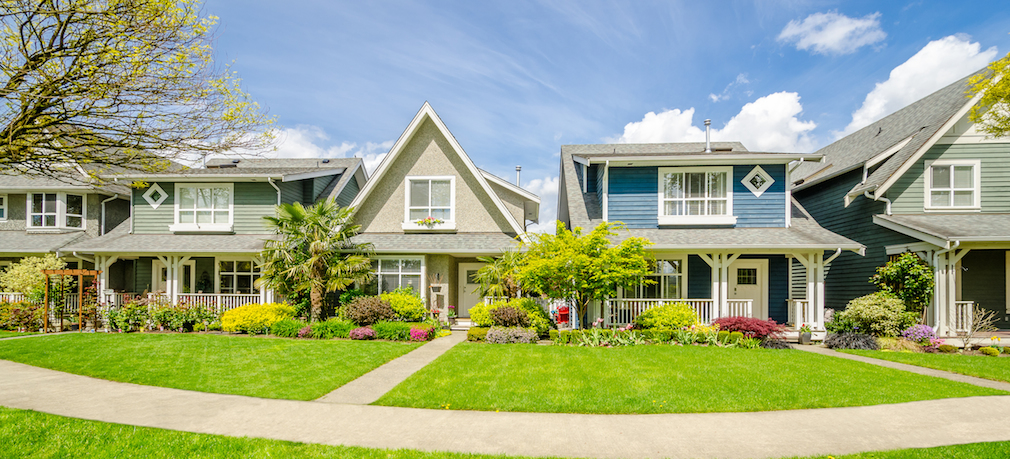The housing reports for March that will be public in April hang in purgatory as strange hybrids of data from before the coronavirus and after the disease shut down the U.S. economy.

Columnist
For this reason, the next existing home sales report from March will not tell you the current story for housing.
When the coronavirus attacked the U.S. economy, we had been enjoying the longest job and economic expansion ever recorded in history. Purchase application data had been on an upswing of double-digit growth year over year until March 18.
Even the most recent pending home sales data (seen below) looked good, which historically has an excellent correlation to the future of existing-home sales.
However, this isn’t the reality in this stay-at-home economy.
Purchase application data in the period after March 18 has gotten progressively worse, down year over year 11%, 24% and 33% for each week since the onset of the crisis.
Purchase applications may go down 54% or more on a year over year basis, before this is over, primarily due to the limited capacity to perform real estate transactions while the economy remains in “stay-at-home” mode.
While demand indicators are down, supply has also been affected. The removal of listings from the MLS has already doubled in these early days of the crisis. While we are homeschooling kids and uncertain if we will remain employed, both buying and selling of homes may seem like a challenge beyond our reserves of energy.
Added to this significant handicap is the tightening credit market. I am estimating that 4.5% – 6.2% of the loans that could have been done before March 9 are now highly unlikely, if not impossible, to execute. This percentage can increase during this recession.
Over the weekend, J.P. Morgan Chase said that outside of home loans to low and moderate-income families that they would require 20% down-payment and a 700 FICO score.
The non-qualified mortgage market is all but dead. This sector that provides bank statement loans and jumbo products may take a while to become re-established after the removal of stay-at-home protocols. Credit will eventually become more relaxed and available. But if previous recessions are any indicator, normalization of lending tends to lag behind other signs of an improving economy, such as employment.
States like California and New York instituted to stay-at-home policies in mid to late March, whereas states like Florida and Georgia only recently instituted such policies. Since we took this staggered approach to attempt to mitigate this healthcare crisis, the return to normal will likely be staggered – state by state – for improvements in the economy and recovery of the housing market as well.
Densely populated urban areas like New York are suffering a heavy toll in terms of numbers of COVID-19 cases. Still, it is the less wealthy areas with predominantly low and middle-income service sector jobs that have been the hardest hit by layoffs.
While the virus does not discriminate between rich and poor, the economic burden visited upon the U.S. by this virus will disproportionately be borne by the less wealthy. It will further widen the gap between the haves and have-nots. In terms of the housing market, this means renters, far more than homeowners, will suffer the most significant impact.
In the longer term, this may add some years of renting before first-time home buyers can pull the trigger.
It will be interesting to see in the next existing home sales report how many purchase transactions were canceled due to the virus. Some home buyers walked away from making their most significant purchase in their lives due to the uncertainty of the economy, job loss, or doubts about future home values.
In contrast, others canceled their transactions because mortgage rates went up, and they didn’t lock the rate. The 10-year yield collapsed on March 9, to a record low 0.32%, and mortgage rate pricing also fell. This caused a glut of refinancing that couldn’t be processed and resold by the lenders. By the end of the week mortgage rates had risen a full percent.
In May, when we see the data for April, we will have a better idea of how many transactions fell apart because lenders were not able to close deals. In fact, this roller-coaster market has driven some out of business.
The March, April, and May existing home sales reports will reflect the chaos theory and the butterfly effect on the housing market. I believe by July 15, we will have a lot of answers to when we can remove lockdown protocols, or maybe by then, we are already socially distancing less. This is why I urge people not to put too much weight into housing data is based on a stay-home economy.
Yes, it will get worse before it gets better – but here is the silver lining: If a great crisis had to happen in the U.S., it couldn’t have picked a better time.
As I keep reiterating, we are going into this dark time from a recent history of tremendous stable economic growth that was taking us toward full employment. Our immediate past abundance is giving us at least a little padding to survive this assault.
In our immediate future, we have demographics on our side. We are in the early stages of the most prominent pro-housing demographic patch ever recorded in U.S. history. The number of Americans ages 26-32 is massive, much bigger than the total population of a lot of countries.
The coronavirus crisis may mean that those young folks will take a little longer to earn the capacity for homeownership, but they will get there. One of the reasons why housing bears have failed so badly since 2012 is that they don’t believe in demographics. But demographics and productivity are economics, the rest is stamp collecting.
It might not seem like it now, but trust me, our future is so bright that one day we will be trading in our face masks for shades.






